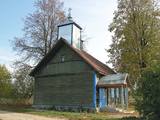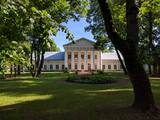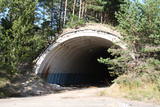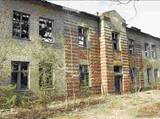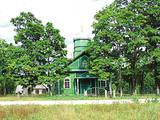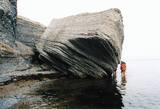| Nr | Nosaukums | Apraksts |
|---|---|---|
|
Krustpils vēstures avotos pirmoreiz minēta 1237. gadā saistībā ar Kreicburgas (Kreutzburg) pils celtniecību Daugavas labajā krastā. 1511. gadā Krustpils pieminēta kā miests. 1585. g. poļu karalis Stefans Batorijs Krustpili uzdāvina Nikolajam Korfam, kura dzimtas īpašumā tā paliek līdz 1920. gadam. Krustpils pievārtē 1626. g. notiek cīņas starp zviedru un poļu karaspēku. Nopostītais miests nīkuļo līdz 19. gs. vidum. Savukārt Jēkabpils izveidojās 17. gs. vidū kā Krievijas vajāto vecticībnieku apmetne - sloboda. Daugava iepretim Krustpilij un Jēkabpilij ir krāčaina, tādēļ strūdziniekiem bija jāapstājas un jāpārkrauj preces vezumos. Tā rezultātā sloboda uzplauka, un 1670. g. tai piešķīra pilsētas tiesības, nosaucot to Kurzemes hercoga vārdā. 1861. g., kad atklāj Rīgas-Daugavpils dzelzceļu, sākas Krustpils, bet beidzas Jēkabpils uzplaukums. Krustpili un Jēkabpili administratīvi apvieno 1962. g., saglabājot Jēkabpils vārdu. Līdz mūsdienām Jēkabpilī ir saglabājusies 19. gs. raksturīgā vienstāvu koka apbūve, 19. un 20. gs. mijā celtām sarkano ķieģeļu ēkas, septiņi dažādu konfesiju dievnami. Daugavas kreiso krastu ieskaujošais aizsargdambis (būvniecību uzsāka 1861. g.) veidots ar mērķi pasargāt pilsētu no plūdiem. Tagad tas pārveidots par promenādi, kas ir iecienīta iedzīvotāju pastaigu un atpūtas vieta. |
||
|
Pļuskovas vecticībnieku kopienas lūgšanu nams celts 20. gs.
sākumā.
|
||
|
Rubeņu ziemeļdaļā – Dzirnavupītes krastos ir izveidots (veidošana uzsākta 20. gs. 50. gados) parks ar ainaviskiem dīķiem, estrādi, akmensdārzu un bērnu spēļu laukumiem. Pie parkā esošā kultūras nama novietots 1969. g. Dzejas dienu laikā atklātais Raiņa piemineklis (autors, tēlnieks Kārlis Baumanis). |
||
|
Lauku viesu māja un dendroloģiskais dārzs netālu no Kuldīgas. Dīķī pie mājas foreles un karpas. Pie viesu nama atrodas Sauleskalnu dendrārijs. Dibināts 1960. g. Šobrīd ~ 100 koku un krūmu sugas, t.sk. 25 – vietējās sugas un 16 rododendru sugas. Unikāli eksemplāri - Latvijā vecākā magnolija (50 gadus veca), 45 gadus vecs parastais parūkkoks (Cotinus coggygria), divdaivu ginks (Ginkgo biloba), sēdziedu akantopakss (Acanthopanax sessiliflorum) u.c. Ieeja pret ziedojumiem. Pieejama vestures izziņas telpa, par saimniekiem, kas šo dārzu veidojuši. Ir Ēvalda Valtera stādīta ozolu birzs. Uz vietas iespējams iegādāties dažādus stādus. |
||
|
Dviragio ezera salā atrodošie Salu muiža un parks no putna lidojuma atgādina Lietuvas kartes aprises. Muižas saimniecības austrumu pusē esošais parks – jaukta plānojuma. Tas ir viens no senākajiem parkiem Lietuvā. Vēl Radviļiem saimniekojot, te bija meža parks, kurā koki netika cirsti. Parkā valdīja vietējo sugu lapu koku – kļavas, liepas, oši, apses, kuri šobrīd jau ir divi simtu gadu veci. Uz ezera pusi stiepjošā taka savieno aleju ar parka taku pie ezera. Līdz mūsdienām ir saglabājušies apstādījumi, aleju fragmenti. |
||
|
Atrodas Rīgas ielā 39. Dievnams celts 1848. – 1849. g. klasicisma stilā (arhitekts A. Štauberts), bet laikā no 1924. – 1934. g. pārbūvēts (A. Vizuļa projekts). Dievnama izskatu salīdzina ar Svētā Pētera katedrāles veidolu Vatikānā. Blakus baznīcai atrodas Rīgas ielas gājējiem domātā daļa. |
||
|
Amatniece praktiskās nodarbībās aicina izjust saikni ar mālu, darboties ar podnieka virpu un attīstīt ikviena tā radošās spējas. Pēc apdedzināšanas keramikas krāsnī, darbus var ņemt līdzi kā labu suvenīru un savu jauniegūto prasmju apliecinājumu. Audzē garšaugus un tējas. Tēju degustācija. |
||
|
Dzērieni no Kurzemē augušiem un pašu lasītiem augļiem un ogām. 100% roku darbs. Vēsture Āboli Apmeklētājiem Kur iegādāties |
||
|
Atrodas Jasmuižas austrumdaļā. Dievnams celts 1815. g., bet pārbūvēts 1932. g. |
||
|
Nakšņošana lauku mājā līdz pat 40 personām (ar papildvietām). Pirts un pirtnieka pakalpojumi, svinību telpa, atpūta dabā – peldvieta dīķos, makšķerēšana, sporta un atpūtas laukumi. Saimnieki piedāvā nobaudīt žāvētas zivis vai zivju zupu, arī no Jūsu pašu iegūtā loma. Makšķerēšanai ir pieejami 17 zivju dīķi. "Paradīzēs" ir iespējams rīkot arī svētku svinēšanu brīvā dabā, kā arī nakšņot teltīs. Viesošanās Viesu namā "Paradīzes" iepriekš obligāti ir jāpiesaka! |
||
|
Cirpstenes zenītraķešu bāze kādreiz bijis nozīmīgs krasta apsardzes militārais objekts. Vizuāli interesanta un iespaidīga teritorija jūras krasta tuvumā, diemžēl nepietiekamas apsaimniekošanas dēļ - piesārņota un nesakopta. Tai iepretim paralēli jūras krastam aiz priekškāpas atrodas zenītraķešu palaišanas laukumi, kurus savieno betonēts ceļš. Šāds militārs veidojums pašā jūras krastā Latvijā ir vienīgais. Ziemeļos no kompleksa (Ventspils dienvidos) atrodas bijušās krasta baterejas.
|
||
|
Veikals "Zaļā Zeme" piedāvā bioloģiskās lauksaimniecības produktus un dabīgus pārtikas produktus, veselīgus produktus bērniem, bezglutēna produktus, ekoloģisku kosmētiku un tīrīšanas līdzekļus. Piedāvājumā Latvijas zemnieku un mājražotāju produkcija, kas gatavota no dabīgām izejvielām. |
||
|
Jūras apsardzes rajons ar zenītraķešu divizionu Miķeļtornī tikusi īpaši veidota Padomju savienības ārējās robežas aizsardzībai. Pašlaik teritorijā tiek izmantota tikai robežsargu bijušā teritorija, kur izvietots Ventspils krasta apsardzes bataljona novērošanas punkts.
|
||
|
Vīna ražošana Allikukivi notiek senajā vadmalas fabrikas direktora ērberģī. Viesi tiek gaidīti uz plašā muižas balkona degustēt daudzveidīgos dzērienus un iepazīties ar vīna darīšanas noslēpumiem, muižas vēsturi un ogu stādījumiem. Augļu un ogu vīnu ražošana pēc igauņu receptēm. |
||
|
Ismeru vecticībnieku kopienas lūgšanu nama celtniecība tika
uzsākta Ismeru ezera krastā 1912. gadā pēc Vitebskā apstiprināta
plāna. Pateicoties iedzīvotāju ziedojumiem, dievnamu uzbūvēja divu
gadu laikā. Ismeru draudze pastāv jau no 1861. gada.
|
||
|
Atrodas paaugstinājumā - skaistā vietā – Alūksnes ezera krastā pie Pleskavas ielas (P 40). Pieminekli 1923. gada 20. jūnijā atklāja Valsts prezidents Jānis Čakste. Tas celts pēc tēlnieka J. Miesnieka meta. Pieminekļa centrā ir attēlots vairogs ar krustotu zobenu, bet pamatnes daļā – uzraksts „Par Latviju kritušiem 7. Siguldas p. Karavīriem. 1919. – 1920”. Tā otrā pusē ir uzraksts: „Labāk manu galvu ņēma, nekā mūsu tēvu zemi”. Padomju laikā (1953. g.) pieminekli nojauc. To atjauno 2009. gadā. |
||
|
Divas salas – Lielā Pakri (Suur Pakri) un Mazā Pakri (Väike Pakri) - 3 km R no Paldiskiem (Paldiski). Padomju laikā tās izmantoja kā armijas aviācijas poligonu, par ko liecina daudzās bumbu bedres un munīcijas paliekas. Salas klāj g.k. retas kadiķu audzes, bet to Z, ZA galos paceļas iespaidīgas līdz 6 m augstas kaļķakmens klintis.
|
||
|
Vilius Orvidas (1952. – 1992.) dārzā aplūkojamas padomju laikos no meliorācijas „paglābto” akmeņu, kapu krustu, koku u.c. priekšmetu brīvdabas instalācijas. |
||
|
Saaremaa and Hiumaa are the two largest ones amongst 1500 other Estonian islands. In fact Saaremaa is the common name for Muhu and Saaremaa islands which are connected by the causeway like Hiumaa and Kassari islands. |
||
|
Ziemeļos no Andrupenes lauku sētas muzeja dziļā starppauguru ieplakā ir iegūlis nelielais (130 m garš, 120 m plats) Andrupenes purvs – augstā tipa purvs ar klaju centrālo daļu. Ieplakas nogāzes klāj baltalkšņu audzes. Rāznas nacionālā parka administrācija 2009. gadā atjaunoja Andrupenes pamatskolas izveidoto purva mācību taku, izveidojot kāpnes, skatu platformu, dēļu laipas un informācijas stendus. |
||


